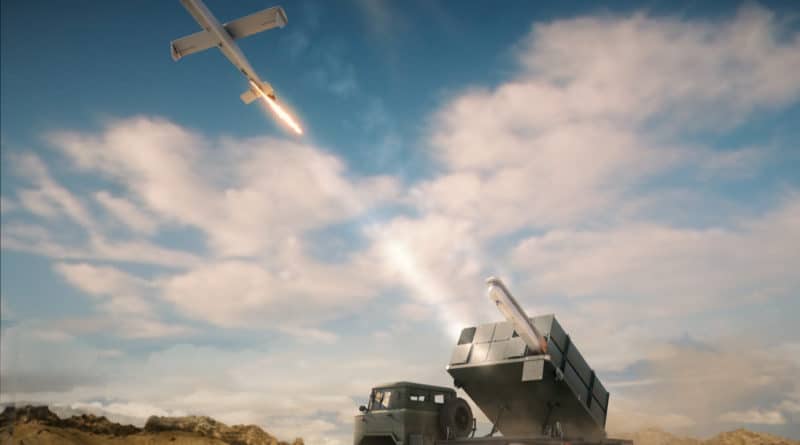The anti-drone drone has been popular for a few months, and especially since the Harpy and other Israeli-made Defender 1Cs implemented by the Azeris operators, swept away the points of resistance, the DCA and the Armenian artillery there is a barely a year ago, during the Nagorno-Karabakh war of 2020. Since then, light reconnaissance drones, roaming ammunition and swarms of drones have simultaneously become technological challenges which it has become imperative and urgent to acquire quickly, but also threats from which we had to protect ourselves as quickly as possible. Beyond kinetic systems and directed energy weapons already in development, it quickly became obvious for the US Army: what could be better and more efficient than a drone to protect itself from other drones?
Indeed, a drone offers important advantages on terrestrial systems, in the first place that of being able to absolve itself of the geography of the place, and therefore to quickly protect a large area, even if it is strewn with obstacles, such as in the case of a hilly or wooded surface. In addition, a drone in "defensive" mode plays in a way "at home" in terms of the electromagnetic environment, being much closer to its own transmitters than offensive drones can be. Therefore, as long as we manage to equip or connect a drone to a system capable of detecting its adversaries in flight, and of a weapon system capable of neutralizing them, the "anti-drone" drone is probably a weapon of choice, economical and effective to counter these threats.

But can a single drone be effective against a swarm of drones, i.e. a group of several drones evolving in a coordinated manner to carry out a saturation attack? This is the question that teams from the Army's Indirect Fires and Rapid Capabilities Office (IF / RCO) at Yuma Proving Ground in Arizona tackled this July 21, in equipping a Coyote 3 drone with a "non-kinetic" anti-drone system, that is to say based either on a jamming system, or a directed energy system of the microwave type, and by testing it against a swarm made up of ten drones. According to the statements of the US Army, not only was the test a success, but it also demonstrated that the Coyote 3 drone could be recovered at the end of the mission, in order to be reconditioned and thus be ready for use again. . The US Army had previously tested a Coyote 2 drone in anti-drone version, but equipped with a military charge to destroy the opposing drone. This time, it was a question of destroying or neutralizing several drones during the same flight, this obviously requiring a different solution.

75% of this article remains to read,
Subscribe to access it!
The Classic subscriptions provide access to
articles in their full version, and without advertising,
from 6,90 €.
Newsletter subscription
Register for the Meta-Defense Newsletter to receive the
latest fashion articles daily or weekly

